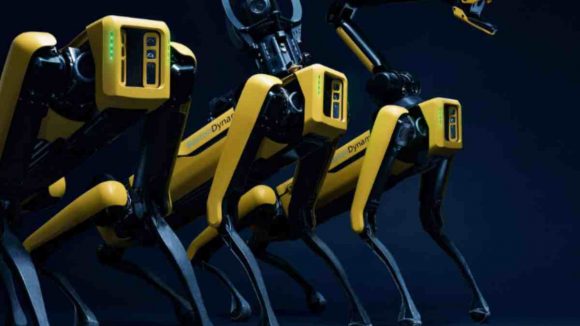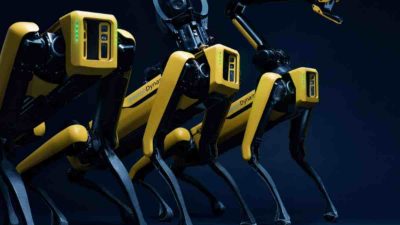“How do you have a robot operating safely amongst humans if you want to have a commercially viable last-mile delivery-legged robot?” asks Navinda Kottege, research director for robotics at CSIRO’s Data61 project. It’s Australia’s national science agency’s data and digital specialist arm.
Research and Markets has recently released a new study indicating that last-mile delivery with robots will nearly triple by the end of 2030. Legged robot last-mile delivery has been flagged as an “emerging opportunity” where investment is expected to be funneled.
Locate2u News sat down with Kottege, who is passionate about legged robotics, believing it can make a “real impact” with shorter delivery distances of up to 45 meters.
Legged robot deliveries can soon be a reality
City life and sky-scraping buildings, with lifts and elevators, make the last few steps of the last-mile delivery “very interesting.”
“You have to step over curb sidewalks, walk through garden pathways, go upstairs, [or through] driveways,” which could be seen as obstacles for robot deliveries, acknowledges Kottege. “Because we currently have a human usually picking up the package from the back of a truck, walking up the driveway, or coming up to a porch and leaving the package.” He reckons it’s here where the legged robots will thrive in the coming years.
Two-, four-, and six-legged robots are slowly being introduced to society. But much like any new technology, it has its “advantages and disadvantages.”
The major challenge – with the more popular choice for now, the two-legged robot – is balance. There are still concerns around how two-legged robots can make deliveries in complexes or apartment blocks where they have to use stairs, says Kottege.
ALSO READ: Pudu Robotics spearheads AI era with robots for retail and restaurants
Scientists working on improvements
Stability and cost are the two things that keep researchers up at night. “Most of these research challenges have been adequately addressed in the last decade,” assures Kottege. “You’d see fairly advanced demonstrations with two-legged systems.”
Although the four-legged systems have more stability, they can’t operate in the same places as the two-legged robots.
More joints to connect the four-legged robot means the cost of manufacturing this technology increases, too. “If you go to six-legged robots again, a lot more joints, a lot more points of failure, you have to have many more actuators,” says Kottege. More actuators mean more dollars.
Other concerns for researchers are “mechanical complexity and more points of failure.”
Kottege believes there is a place for all three different designed robots in the final few steps in last-mile delivery. The environment will dictate which robot will thrive, given the circumstances.
Introducing legged robot deliveries to public
When will the public see more of these legged robots roaming around buildings and sidewalks delivering food? According to Kottege, the wait is almost over. “From a technical point of view, I believe most technologies are already there. So it’s a matter of putting all of that together.”
CSIRO has noticed that “a number of companies” are investing in developing these legged systems. This means it’s becoming more affordable, hopefully opening the door for more of this type of last-mile logistics in the next few years.
But the “more challenging question” that Kottege points out is the acceptance of society. “How do humans behave around these robots? Over time, these things will be more acceptable because we are seeing a change in how things are delivered to us. Before, it was the traditional postpostman, but things are changing now that the market is more diverse.”
Last year, reports surfaced about vandals and opportunists damaging delivery robots. Sometimes, people stepped on the robot and forcibly opened it to remove the transported items.
Kottege is hopeful that society will catch up sooner rather than later and accept robots delivering their meals or other necessities from convenience stores.
NOW READ: Delivery robot privacy concerns mount after footage supplied to authorities
Going beyond final mile delivery in urban areas, these legged robots can access underdeveloped areas where no vehicle has ever forced a path through the jungle. Legged robots can supply life-saving medical supplies or equipment to communities in need.
“We’re living in a very interesting time,” says Kottege.
Image credit: Boston Dynamics
About the author
Mia is a multi-award-winning journalist. She has more than 14 years of experience in mainstream media. She's covered many historic moments that happened in Africa and internationally. She has a strong focus on human interest stories, to bring her readers and viewers closer to the topics at hand.











